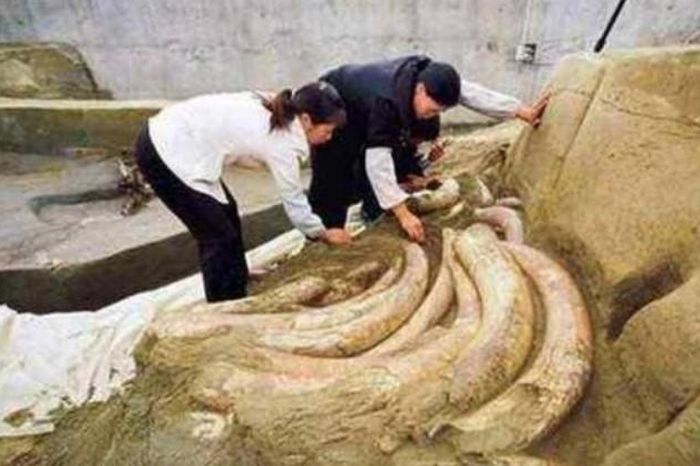The octagonal sword in the ancient tomb is shiny after 3,000 years

The sword when unearthed was in such good condition that it still flashed. The sword's tail has an octagonal shape cast from a copper-containing alloy. The weapon's green color is due to copper oxidizing when exposed to air and water.
After research and analysis, archaeologists determined that the sword was born in the late 14th century BC. To create such an octagonal sword, the blacksmith must be highly skilled.
The blacksmith used a technique called overcasting to create a handle with two rivets, molded over the blade. The center of gravity on the front of the blade shows that it can cut opponents effectively. However, the blade has no visible cuts or signs of wear, suggesting that the sword was made for ceremonial or symbolic use rather than for combat.
Researchers said that in Germany there are two octagonal sword production areas: the south and the north. They are not sure where the newly discovered sword came from.
Mathias Pfeil, head of the Bavarian Monuments Protection Authority, said researchers need to examine the sword and the tomb to classify the find more accurately.
You should read it
- The rare ancient Roman mosaic of the 4th century was discovered in England
- The groundbreaking archaeological findings about ancient Egypt
- The 'eccentricities' are only found in ancient Egypt
- Back in the past to find out how the ancient Romans went to the toilet
- Ancient urban area found at the construction area of Hyatt Sofia
- The 1,600-year Roman tomb with ancient coins was discovered in Somerset
 A new super beast appeared in Uruguay, 16 m long
A new super beast appeared in Uruguay, 16 m long 10 ghost ships surround a Greek island, the oldest is 5,000 years old
10 ghost ships surround a Greek island, the oldest is 5,000 years old 72 villages were discovered on the seabed, and there are still traces of life. Is it possible that the seabed can really exist?
72 villages were discovered on the seabed, and there are still traces of life. Is it possible that the seabed can really exist? Experts dug up the 'ivory bank', but they panicked and retreated halfway through the excavation. The truth lies in the ivory
Experts dug up the 'ivory bank', but they panicked and retreated halfway through the excavation. The truth lies in the ivory A woman's body was exhumed from a thousand-year-old blood coffin leaking thick black water, experts were shocked: Evacuate immediately
A woman's body was exhumed from a thousand-year-old blood coffin leaking thick black water, experts were shocked: Evacuate immediately Modern science and technology are advanced, why don't you dare dig up Qin Shi Huang's mausoleum? 4 mysteries were discovered that shocked experts
Modern science and technology are advanced, why don't you dare dig up Qin Shi Huang's mausoleum? 4 mysteries were discovered that shocked experts